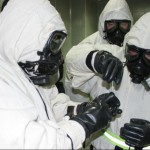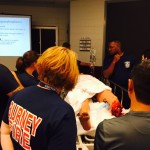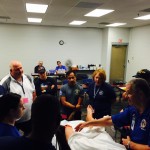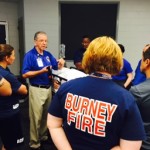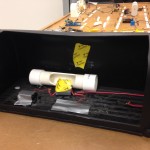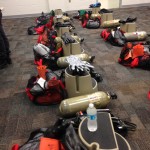I recently spent 5 days a the Department of Homeland Security’s Center for Disaster Preparedness (CDP) in Anniston, Alabama to take the TERT Class (Technical Emergency Response Training for CBRNE Incidents). This class is sponsored by FEMA and designed for Emergency Responders (Police, Sheriff, Firefighters, Paramedics, EMTs, and Search & Rescue Personnel) to train them to mitigate incidents involving chemical, biological, radiological, nuclear, or explosives (CBRNE) hazards, natural disasters, civil disturbances, and overall emergencies. The CDP offers realistic, scenario-based training to provide participants with the knowledge and skills necessary for effective and efficient response.
Technical Emergency Response Training for CBRNE Incidents is a 4-day training course that provides an overview of current terrorism threat and CBRNE hazards. CBRNE is an acronym for Chemical, Biological, Radiological, Nuclear and/or Explosive hazards. The course also provides hands- on practical exercises in decontamination, triage, surveying and monitoring, and response to an incident involving secondary devices. Additionally there is an ongoing scenario known as the “Northville Scenario” that takes place in a mock town, with structures and mannequins which ties all lectures and hands-on training together. This Northville Scenario gave our class the ability to identify all areas of response to a CBRNE/all-hazards incident.
The TERT course consisted of 32 contact hours, and at the end, we performed surveying/monitoring procedures, mass casualty operations and decontamination of casualties within a toxic agent training facility known as COBRATF or Chemical, Ordnance, Biological, and Radiological Training Facility. In COBRATF we were exposed to Sarin (Gb), Anthrax, Vx, and Ricin and were evaluated on the performance of acquired skills and tasks within this toxic agent environment. Due to the nature of the Personal Protective Equipment (PPE) necessary for this course, we were required to have our vitals (Blood Pressure, Pulse & Respiration) taken twice every day, and have a blood sample drawn the day before and morning after our COBRATF experience.
In our class of 33 students, we had a mixed grouping of skills and experience, but most were professional first responders (about 2/3 of the class were Firefighters and Airport Police). We did have some Sheriffs Deputies, city Police Officers, and paramedics, but I was the only Search & Rescue EMT. Of note were two of the Police Officers from Guam and American Samoa who were there for 2 weeks taking various courses. The housing was very nice, as I had expected dormitory style living, but we had private rooms and a shared bathroom. Our training was usually from about 630am to 430pm, which left some time at the end of the day to go for a local run (I spotted a rattlesnake, 4 deer and 6 wild turkeys) or visit to the gym before dinner at the cafeteria from 530pm-730pm. Most evenings were spent at the “Recovery Zone Lounge” on the base, which served $1.50 beers and free video games to just hang out with other students.
This course was very thorough and well coordinated to give all students the opportunity to be “another set of eyes” keeping watch on public safety, as well as an eye opening experience as to how simple and easy many dangerous items would not be identified by the average person. This course also was instrumental in gaining experience with proper PPE, its use and inspection; donning and doffing PPE safely and effectively; as well as proper decontamination procedures. It was eye opening the sheer number of Emergency Personnel that will be necessary to adequately extricate and decontaminate victims if there were a MCI event that involved CBRNE hazards. I feel that this alone is reason enough that more people should be familiar and able to use CBRNE PPE and Decontamination Procedures.
If you are reading this and are interested in taking this course, go to http://cdp.dhs.gov/training for more information. If you are a First Responder (Police, Sheriff, Fire, EMT, Paramedic, Search & Rescue) for a local agency this training is FREE!!! FEMA will pay for your flight and transportation to the CDP, housing and meals during the training. This is an incredible opportunity for hands on training and experience. I feel that all First Responders should be well versed in the dangers of CBRNE, and know how to assist with Decontamination, as well as proper use of PPE Level B & C.
